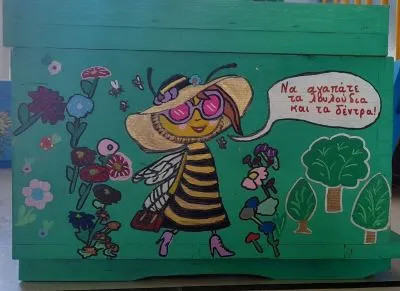Environmental Education
Education - Awareness raising
Description: Students in Karystos, Chios, Attica and elsewhere transform beehives into works of art, participate in environmental education programmes, and organise photography exhibitions.
Results: We transform schools into hands-on learning spaces, foster ecological awareness, and promote practical action to protect nature from an early age.
Impact: Students took an active role as positive agents of change, strengthening the human–nature connection.
Testimonials:
"Protecting species like Bees is an investment in our future and the future of the planet!".
– Students of 1st Primary School of Chios
"Bees are always focused on their goals. We can truly learn from them".
– SAEK Karystos Students
Support the Initiative
Become part of a hive of hope for bees, nature, and our culture. Together, we preserve biodiversity, showcase our heritage, and inspire communities.
Thank you!



